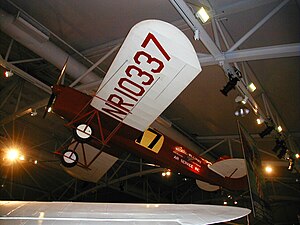
Patterson is a city in St. Mary Parish, Louisiana, United States. The population was 6,112 at the 2010 census. It is part of the Morgan City Micropolitan Statistical Area.
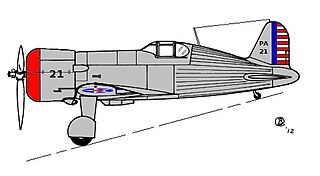
The Wedell-Williams XP-34 was a fighter aircraft design submitted to the United States Army Air Corps (USAAC) before World War II by Marguerite Clark Williams, widow of millionaire Harry P. Williams, former owner and co-founder of the Wedell-Williams Air Service Corporation.
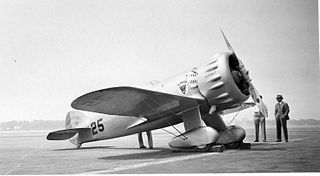
The Wedell-Williams Model 44 is a racing aircraft, four examples of which were built in the United States in the early 1930s by the Wedell-Williams Air Service Corporation. It began as a rebuilding of the partnership's successful We-Will 1929 racer, but soon turned into a completely new racing monoplane aircraft, powered by a large radial engine. Model 44s became the dominant racers of the 1930s, setting innumerable records including setting a new world speed record in 1933.
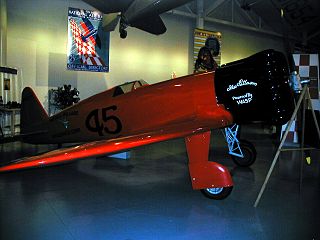
The Wedell-Williams Model 45 was a racing aircraft built in the United States in 1933.
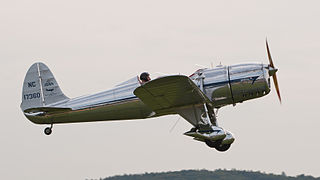
The Ryan STs were a series of two seat, low-wing monoplane aircraft built in the United States by the Ryan Aeronautical Company. They were used as sport aircraft, as well as trainers by flying schools and the militaries of several countries.
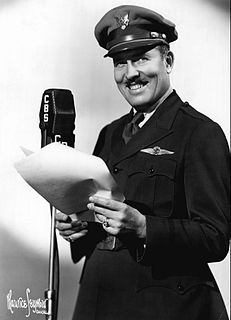
Roscoe Turner was a record-breaking American aviator who was a three-time winner of the Thompson Trophy air race and widely recognized by his flamboyant style and his pet, Gilmore the Lion.

Great Lakes Aircraft Company is an aircraft manufacturer known for the 2T-1A Sport Trainer biplane. The company has a long history of building both private and military aircraft.

The Phantom of the Air is a 12-episode 1933 Pre-Code Universal film serial directed by Ray Taylor. The film stars Tom Tyler, who was cast most often in Westerns. Other actors include Gloria Shea, LeRoy Mason, Craig Reynolds and William Desmond.
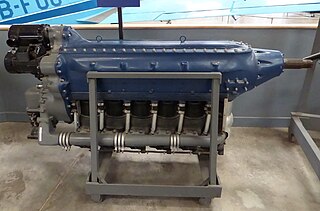
The Menasco Buccaneer was a series of popular six-cylinder, air-cooled, in-line, inverted, aero-engines, that were manufactured by Menasco Motors Company for light general aviation and sport aircraft during the 1930s and 1940s.
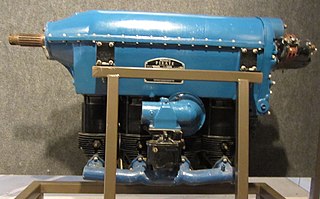
The Menasco Pirate series were four-cylinder, air-cooled, in-line, inverted aero-engines, built by the Menasco Motors Company of Burbank, California, for use in light general and sport aircraft during the 1930s and 1940s. The Menasco engines came in both normally aspirated and supercharged forms, with the supercharged models exhibiting superior performance at higher altitudes, with a relatively small increase in dimensions and weight. The supercharged models had the S suffix added to their designation to show supercharging.

The Gee Bee Sportster was a family of sports aircraft built in the United States in the early 1930s by the Granville Brothers. They were low-wing strut- and wire-braced monoplanes of conventional, if short-coupled, design, with open cockpits and fixed, tailskid undercarriage.

The Cessna GC-1 was an air racer built to compete in the Cirrus All American Air Derby in 1930.
The Cessna CR-2 was a mid-winged racing aircraft in the CR series of Cessna racers.
Art Chester (1899–1949) was an American barnstormer and air racer of the 1930s and 1940s. Chester was instrumental in the development of the Menasco Pirate and Buccaneer inverted inline engines. He was also the designer of the propeller spinner and engine front cowling for the North American North American P-51 fighter.
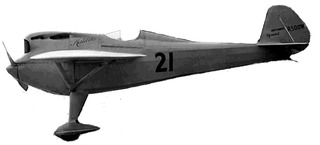
The Folkerts SK-1,Speed King One, Mono Special, Matilda, Fordon-Neumann Special, Hardwick-Whittenbeck Special was a racer built for the 1930 American Cirrus Aircraft Engine Company sponsored American Cirrus Derby.

The Folkerts SK-2, also known as Speed King Two, "Toots" and "Miss Detroit" was a racer built for the 1936 National Air Races

Chief Oshkosha.k.a.Buster is a homebuilt racing plane designed to compete in the 1931 American Cirrus Races.
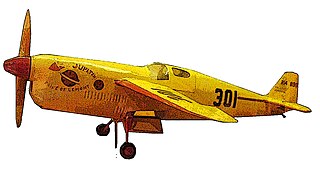
The Folkerts SK-3 a.k.a. "Jupiter, Pride of Lemont was the third in a series of air racers developed by Clayton Folkerts.

James Robert Wedell was a famous 1930s racing pilot and aircraft designer. Wedell broke the world record for land-plane speed in 1933 when he clocked 305.33 m.p.h. in a Wedell-Williams aircraft of his own design. He won the Thompson Trophy air race in the same year. Wedell's company, the Wedell-Williams Air Service Corporation, won 14 "distinguished finishes" in the Thompson and Bendix Trophy races.
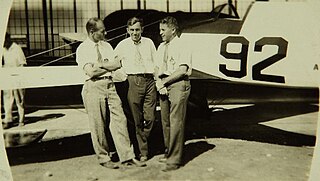
Harry Palmerston Williams was an American businessman. He was in Louisiana throughout the early years of the 20th Century. He became a noted aviation owner of the Wedell-Williams Air Service Corporation that dominated air racing in the United States during the so-called Golden Age of Aviation.
